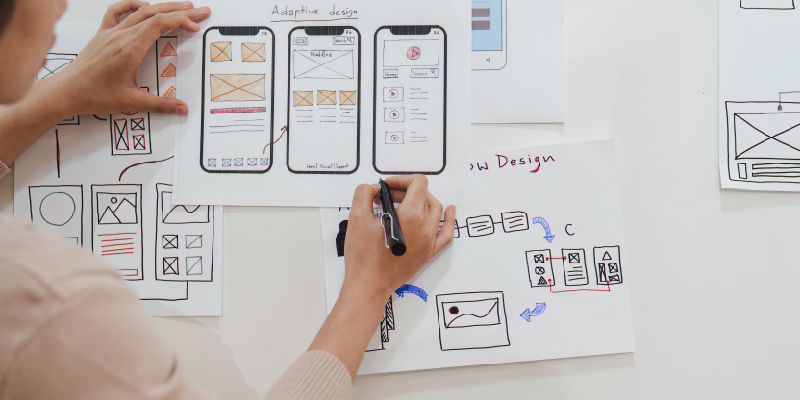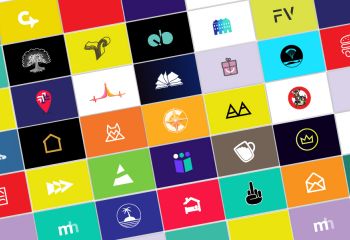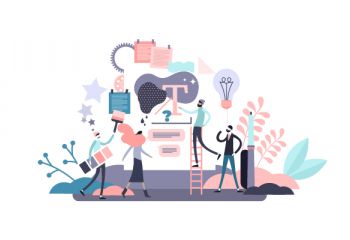
Viv Harries is the Founder of Vivi Creative. He works with businesses to give them the creative edge with unique designs and a solid brand identity.
recent posts
- How a Strong Brand Can Help Welsh Startups Stand Out
- Top 10 Logo Design Mistakes (and How to Avoid Them)
- Web Design Trends of 2025: What’s In, What’s Surprising, and What Actually Works
- Design Trends for 2025
- Maximising Your ROI with Meta and Google Ads in 2025: Best Practices and Our Proven Process

How do you develop an app?
The explosive growth of user-friendly and accessible mobile applications has revolutionised the way we interact with technology. Whether you're an aspiring entrepreneur or an established business, grasping the intricacies of app design and development is essential for staying ahead of the curve.
As our reliance on smartphones continues to soar, the advantages of building an app over a conventional website have become increasingly evident. While websites serve their purpose, mobile apps provide unique advantages that make them increasingly popular.
Apps offer enhanced personalisation, leveraging features like push notifications and location-based services. They provide a more intuitive and immersive user experience through optimised performance and user interface. Apps can also work offline, enabling access to content and functionality without an internet connection. Furthermore, apps have a dedicated presence on a user's device, increasing brand visibility and fostering long-term engagement.
At VIVI creative we have developed a concise process of app development with 5 very important stages. In this blog post we are going to explain this process in more detail.
1. Ideation
Ideation is a crucial stage in the app design and development process where innovative ideas are generated and refined. It involves brainstorming sessions, market research, and a deep understanding of user needs and preferences. Let's explore the process of ideation in more detail:
User Needs Analysis:
The first step in ideation is to understand the needs, pain points, and aspirations of the target audience. This involves conducting market research, user feedback, and gathering insights through surveys or interviews. By identifying the problems users face and the goals they want to achieve, designers can develop app concepts that provide valuable solutions.
Idea Generation:
Once the user needs are understood, the next step is to generate a wide range of ideas. This can be done through brainstorming sessions where team members, including designers, developers, and stakeholders, contribute their thoughts and suggestions. The aim is to encourage creativity and explore various possibilities that align with the identified user needs.
Idea Refinement:
After generating a pool of ideas, it's important to refine and evaluate them based on feasibility, viability, and desirability. This involves filtering out ideas that may not align with the project goals, technical constraints, or market demands. The remaining ideas are further refined by analysing their potential impact, market competitiveness, and alignment with the target audience's preferences.
Prioritisation:
With a refined set of ideas, prioritisation is essential. This involves selecting the most promising concepts that have the highest potential for success. Factors such as market demand, business goals, development resources, and timeline are taken into consideration to determine which ideas should be pursued further.
Concept Development:
Once the top ideas are selected, the next step is to develop them into concrete app concepts. This involves creating user personas, defining the app's purpose, features, and functionality, and mapping out the user journey. Sketches, diagrams, or visual representations may be used to articulate the concept and communicate it effectively to the design and development teams.
By investing time and effort in the ideation phase, app designers and developers can ensure that the final product addresses genuine user needs, stands out in the market, and has the potential for success. Ideation sets the stage for the subsequent steps in app design and development, leading to a well-rounded and user-centric application.
2. Wireframing
Wireframing is a critical stage in app design that focuses on creating a visual representation of the app's structure, layout, and functionality. It serves as a blueprint or skeletal framework that outlines the various components and their placement within the app. Here's a closer look at the process of wireframing:
Defining App Structure:
During the wireframing stage, the primary objective is to establish the overall structure and hierarchy of the app. This involves determining the number of screens or pages required, as well as the relationships and flow between them. The focus is on creating a logical and intuitive navigation system that guides users through the app effortlessly.
Content Placement:
Wireframes outline where different content elements will be placed on each screen. This includes text, images, buttons, input fields, menus, and other interactive elements. The emphasis is on arranging these elements in a way that supports the app's functionality and facilitates smooth user interactions.
Sketching and Low-Fidelity Mockups:
Wireframes are typically created using sketching tools or digital design software. They often adopt a simplified and low-fidelity approach, using basic shapes and placeholders instead of detailed visuals. This allows designers to focus on the overall structure and layout rather than getting caught up in aesthetics at this early stage.
Iteration and Feedback:
Wireframes are shared with stakeholders, including designers, developers, and clients, for feedback and input. This collaborative process helps identify any potential usability issues, areas for improvement, or missing functionality. Iterations and revisions are made based on the feedback received, refining the wireframes to ensure a better user experience.
Annotating and Documentation:
Wireframes are sometimes accompanied by annotations or notes that provide additional context and explanations for specific design choices or interactions. This documentation helps communicate the intended functionality and behavior to the development team during the implementation phase.
Wireframing is a critical step that bridges the gap between ideation and visual design. It allows designers and stakeholders to visualize and evaluate the app's structure and layout before investing significant resources in development. By establishing a solid foundation through wireframing, designers can create a user-friendly and intuitive app interface that aligns with user needs and business goals.
3. Prototyping:
Prototyping plays a vital role in the app design and development process by creating a tangible representation of the app's functionality and interaction. It allows designers and stakeholders to test and refine the user experience before proceeding to full-scale development. Let's delve into the process of prototyping in more detail:
Creating a Working Model:
Prototyping involves building a functional model of the app that simulates its core features and interactions. The level of fidelity can vary, ranging from basic click-through prototypes to more advanced interactive simulations. The goal is to create a representation of the app that closely mimics the intended user experience.
User Flow and Navigation:
During the prototyping phase, designers focus on establishing the user flow and navigation within the app. This includes defining the sequence of screens, the transitions between them, and how users will interact with various elements. Prototypes enable stakeholders to experience and evaluate the logical progression of the app's functionality and make necessary adjustments.
Visual Representation:
While prototyping primarily focuses on functionality, visual design elements are also incorporated to some extent. This helps stakeholders get a glimpse of the app's visual aesthetics and how different interface components will appear. However, the visual design at this stage is typically less refined compared to the final product.
Usability Testing and Feedback:
Prototypes are shared with potential users or targeted participants for usability testing and feedback gathering. This allows designers to assess the effectiveness of the user interface, identify any usability issues or bottlenecks, and gather insights for further improvement. Feedback from users during this stage is invaluable in refining the app's overall user experience.
Iteration and Refinement:
Based on the feedback received, designers iterate on the prototype, making necessary adjustments to enhance the app's functionality, usability, and user interface. This iterative process helps in fine-tuning the app's features, addressing usability issues, and aligning the prototype more closely with the desired final product.
Prototyping bridges the gap between conceptual design and development, providing an opportunity to validate and refine app concepts before investing in full-scale implementation. It enables stakeholders to experience the app's functionality firsthand, gather user feedback, and make informed decisions that contribute to a more seamless and user-centric final product.
4. Visual Design:
Visual design is a crucial aspect of app design and development that focuses on creating an appealing and consistent visual identity for the application. It encompasses the use of colours, typography, imagery, icons, and other visual elements to enhance the overall user experience. Let's delve into the process of visual design in more detail:
Establishing Brand Guidelines:
Before diving into visual design, it's essential to establish brand guidelines or adhere to existing ones. Brand guidelines define the visual identity of the app, including the colour palette, typography, logo usage, and overall brand personality. These guidelines ensure that the app's visual design aligns with the brand's values and maintains consistency across different touchpoints.
Colour Palette and Typography:
Choosing an appropriate colour palette is a crucial step in visual design. Colours evoke emotions and can impact user perception and engagement. Designers carefully select colours that resonate with the app's purpose and target audience. Similarly, typography plays a significant role in enhancing readability and setting the tone of the app. Selecting appropriate fonts that align with the brand's personality and ensure legibility is essential.
Iconography and Imagery:
Icons and imagery add visual interest and aid in conveying information within the app. Designers create custom icons or select appropriate icon sets that align with the app's visual style and provide clear visual cues to users. Imagery, such as illustrations or photographs, can be used to enhance the user experience, evoke emotions, and support the content or messaging within the app.
UI Components and Layouts:
Visual design involves creating or selecting user interface (UI) components, such as buttons, menus, cards, and input fields, that are visually appealing and intuitive. These components should be consistent in terms of style and appearance to ensure a cohesive user interface. Designers also focus on the layout of these components, arranging them in a way that facilitates easy navigation and optimal user engagement.
High-Fidelity Mockups:
As the visual design progresses, designers create high-fidelity mockups that depict the final look and feel of the app. These mockups showcase the various screens of the app with the finalized visual elements, typography, and color schemes. High-fidelity mockups provide a clear vision of how the app will appear to users and serve as a reference for the development team.
Iteration and Feedback:
Visual design is an iterative process that involves gathering feedback from stakeholders and users. Designers present the visual design mockups for review and incorporate feedback to refine and enhance the design. This iterative feedback loop ensures that the visual design aligns with user expectations, usability requirements, and the overall goals of the app.
Visual design plays a crucial role in creating an engaging and visually appealing app. By following a well-defined visual design process, designers can create a consistent and visually captivating user interface that enhances the overall user experience and reinforces the brand identity.
5. Implementation:
Implementation is the stage in app design and development where the visual design and functionality are brought to life through coding and integration. It involves the actual development of the app using programming languages and frameworks suitable for the target platform. Let's explore the process of implementation in more detail:
Programming Languages and Frameworks:
During the implementation phase, developers utilise programming languages and frameworks suitable for the target platform of the app. For example, Java or Kotlin for Android apps, Swift for iOS apps, or JavaScript for cross-platform development. These languages and frameworks provide the tools and resources necessary to build the app's features and functionality.
Front-end and Back-end Development:
Front-end development focuses on creating the user interface and user experience of the app. This involves translating the visual design into code, implementing UI components, and ensuring the app's responsiveness across different devices and screen sizes. Back-end development involves building the server-side logic, database integration, and any necessary APIs to support the app's functionality.
Collaborative Development:
Implementation requires collaboration between designers and developers to ensure a smooth transition from visual design to functional app. Designers provide the necessary assets, such as graphics and UI elements, while developers work closely with the design team to address any technical considerations and implement the desired functionality.
Testing and Debugging:
Throughout the implementation process, rigorous testing and debugging are performed to identify and fix any bugs or issues. Developers conduct unit testing, integration testing, and user acceptance testing to ensure the app functions as intended and provides a seamless user experience. Any discovered bugs or usability issues are addressed and resolved promptly.
Optimisation and Performance:
Developers optimise the app's performance by fine-tuning the code, minimising resource usage, and optimising loading times. They ensure that the app is responsive, loads quickly, and delivers a smooth user experience even on lower-end devices or with limited network connectivity. Performance testing is conducted to assess the app's responsiveness and efficiency.
Deployment and Maintenance:
Once the app has been developed and thoroughly tested, it is prepared for deployment to the intended app stores or distribution platforms. The necessary app store guidelines and requirements are followed for submission. After deployment, developers provide ongoing maintenance, updates, and bug fixes to ensure the app remains functional and compatible with evolving technologies and operating system updates.
Implementation is the stage where the app comes to life, transforming the design and functionality into a fully functional and interactive application. The collaborative efforts of designers and developers, combined with rigorous testing and optimisation, ensure the final product delivers a seamless user experience and meets the intended goals and objectives.
By following this systematic approach our app design and development team at VIVI Creative can create a compelling and user-friendly app that meets the needs of the target audience while aligning with business goals. Collaboration and iteration are key throughout the process, ensuring a coherent and engaging final product that delivers a seamless user experience.
We would love to hear about your app design project and are always on the lookout for cool and exciting projects to be involved with.
Thanks for reading


